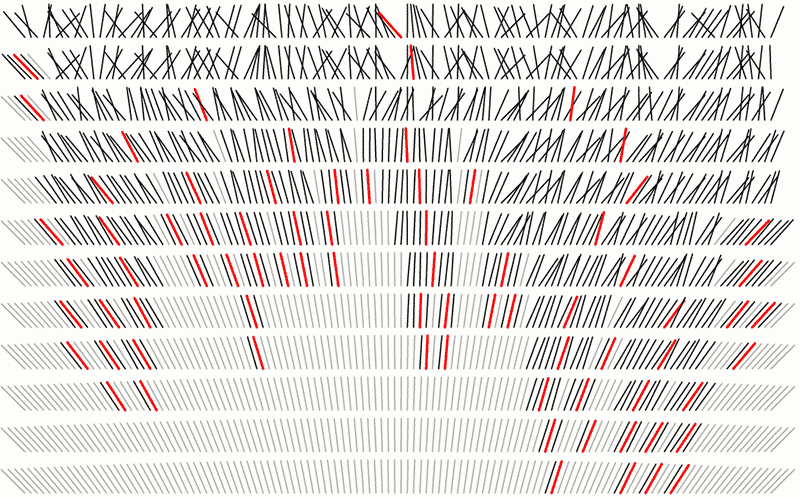Algorithm Visualization
Data mining and data visualization specialist Mike Bostock has published an excellent selection of visualization of various algorithms.
The work is unique, in a way, because in this case, the graphical display is especially difficult to do: after all, in fact, there is no data for analysis. “But the algorithms also demonstrate that visualization is more than just a tool for finding patterns among data,” writes Mike Bostock. “Visualization uses the human visual system to expand human intelligence : with its help, we better understand important abstract processes and, I hope, other things too.”
Simply put, vision helps us think.
Mike Bostock is confident that his work helps to better understand the work of the algorithms. Moreover, if someone wants to understand the work of one or another algorithm, then it is best to try to do the visualization yourself, because trying to explain something is the best way to understand the subject.
')
In addition, a graphical representation of the problem helps to find errors in its implementation of the algorithm, and indeed, this is interesting in itself.
The author published an animated presentation of the following algorithms and processes:
Shuffling
Quick sort
Merge sort
Labyrinth generation (maze generation)
Sampling
For example, for quick sorting, Mike Bostock offers three visualization options: 1) animation; 2) dense stationary exposure and 3) sparse stationary exposure. Each of the options has its advantages and disadvantages. So, it is interesting to watch the animation, but static pictures can be thoughtfully examined in detail.
Two options for static rendering.


The work is unique, in a way, because in this case, the graphical display is especially difficult to do: after all, in fact, there is no data for analysis. “But the algorithms also demonstrate that visualization is more than just a tool for finding patterns among data,” writes Mike Bostock. “Visualization uses the human visual system to expand human intelligence : with its help, we better understand important abstract processes and, I hope, other things too.”
Simply put, vision helps us think.
Mike Bostock is confident that his work helps to better understand the work of the algorithms. Moreover, if someone wants to understand the work of one or another algorithm, then it is best to try to do the visualization yourself, because trying to explain something is the best way to understand the subject.
')
In addition, a graphical representation of the problem helps to find errors in its implementation of the algorithm, and indeed, this is interesting in itself.
The author published an animated presentation of the following algorithms and processes:
Shuffling
Quick sort
Merge sort
Labyrinth generation (maze generation)
Sampling
For example, for quick sorting, Mike Bostock offers three visualization options: 1) animation; 2) dense stationary exposure and 3) sparse stationary exposure. Each of the options has its advantages and disadvantages. So, it is interesting to watch the animation, but static pictures can be thoughtfully examined in detail.
Quick sort
function quicksort(array, left, right) { if (left < right - 1) { var pivot = (left + right) 9>> 1; pivot = partition(array, left, right, pivot); quicksort(array, left, pivot); quicksort(array, pivot + 1, right); } } function partition(array, left, right, pivot) { var pivotValue = array[pivot]; swap(array, pivot, --right); for (var i = left; i < right; ++i) { if (array[i] < pivotValue) { swap(array, i, left++); } } swap(array, left, right); return left; } Two options for static rendering.


Source: https://habr.com/ru/post/227915/
All Articles